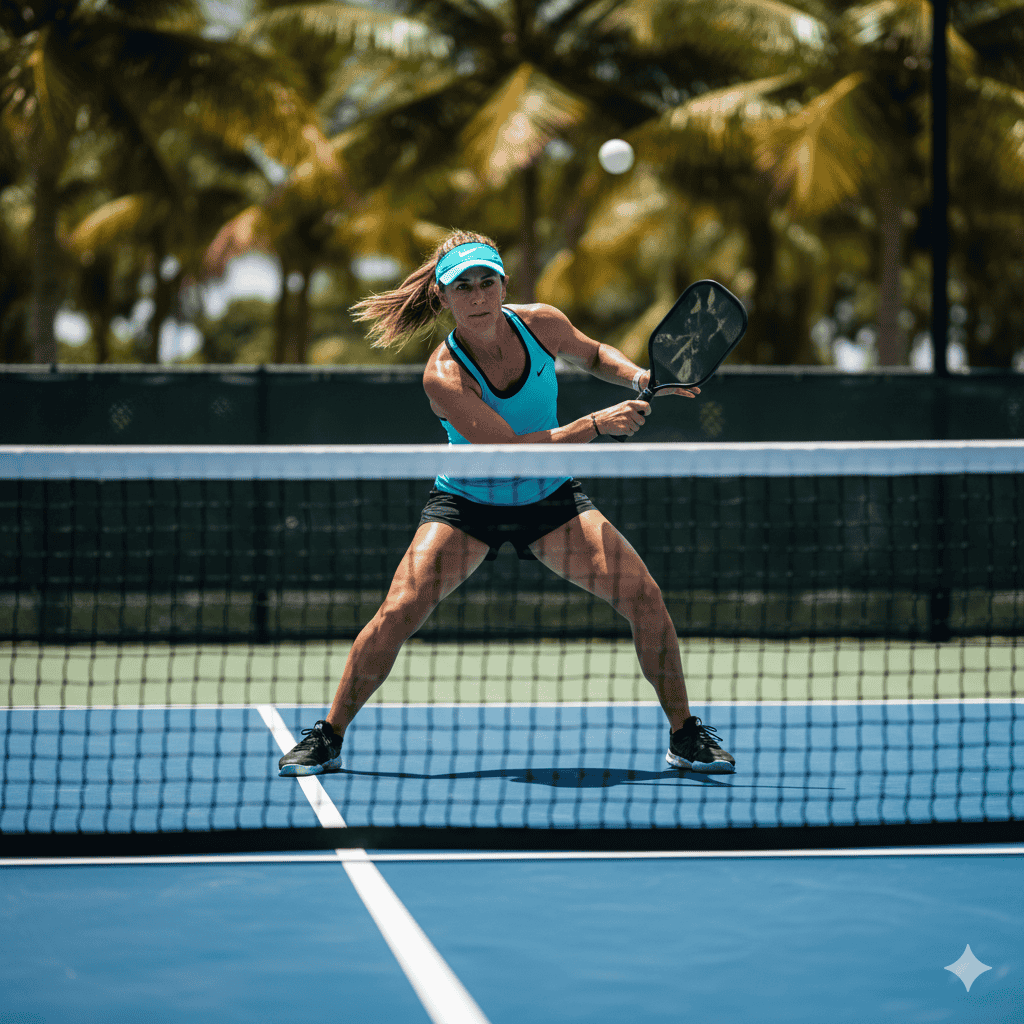Pickleball Playing Techniques
A Complete Guide to Pickleball Techniques: Strategies and Skills for Taking Control of the Game
In Pickleball, mastering a wide range of effective playing techniques is the foundation of consistent success.
Whether you are new to the game or already experienced, understanding various styles of play helps you elevate your competitive performance and enjoy the strategic richness of Pickleball to its fullest.
I. Power Serve Offense: Seizing Initiative From the First Shot
The power-serve offensive style focuses on using the serve as a weapon to immediately take control of the rally.
When serving, players must skillfully combine speed, angle, and spin to generate pressure. A fast, penetrating flat serve can drive the opponent deep into the court, forcing a late return and limiting their ability to counterattack effectively. Adding sidespin can make the ball curve upon landing, disrupting the opponent’s positioning and timing. This approach requires strong serving fundamentals and the ability to choose the right serve based on the opponent’s tendencies. Once the serve puts the opponent on the defensive, the server can step forward aggressively for volleys or put-away shots, maintaining momentum and dictating the pace of the game.

II. Baseline Rally Control: Consistency, Patience, and Tactical Probing
Baseline play prioritizes stability, shot precision, and long-term strategy.
In rallies from the backcourt, players need to manage ball height, depth, and angle while maintaining rhythmic consistency. A well-timed lob can push the opponent backward, stretching their court coverage and draining their stamina. Meanwhile, flat, faster shots can speed up the rally and apply direct pressure. The essence of baseline technique lies in patience—repeatedly moving the opponent, reading their movement habits, and waiting for the perfect moment to strike. When an opening appears, a sharp cross-court drive or a clean down-the-line winner can decisively shift the momentum.

III. Net Volley Pressure: Fast, Controlled, and Highly Efficient
Net volleying emphasizes rapid reactions and precise execution at close range.
Players must use quick footwork to approach the net and take the ball early, maximizing control and minimizing the opponent’s response time. Soft, low volleys can skim just over the net and land close to the opponent’s feet, while firmer mid-court punches can target open spaces for instant winners. The strength of this style lies in its ability to end rallies quickly, but it requires excellent hand-eye coordination and mental calmness, as the pace near the net is intense and unforgiving.

IV. Hybrid Style: Versatile, Adaptive, and Hard to Predict
The hybrid style blends multiple techniques into a flexible, dynamic approach.
Relying on just one playing style often makes a player predictable, but switching styles throughout a match can disrupt the opponent’s rhythm. For instance, after serving, one might settle into baseline exchanges or suddenly transition to the net for pressure volleys—depending entirely on the opponent’s return. After a quick net attack, if the opponent recovers, the hybrid player may retreat to the baseline to reset and defend. This continuous variation keeps opponents guessing and creates numerous tactical opportunities. To execute this style well, players need all-around skills and strong game awareness, enabling them to choose the optimal strategy in real time.
Conclusion
Pickleball offers a diverse palette of playing styles, each with its own strategic value and opportunities.
To excel on the court, players must train consistently, strengthen core techniques, and learn to adapt their style based on their opponent's habits and the flow of the match. Those who master multiple playing techniques—and apply them wisely—will gain a clear competitive edge and enjoy the long-lasting excitement that Pickleball brings.
BHI Pickleball-Custom pickleball paddle






